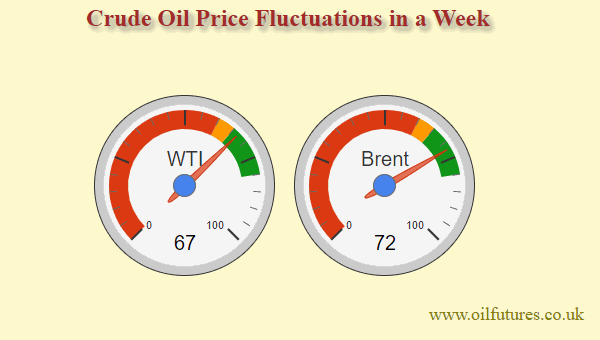The weaker dollar managed to eclipse the
psychological hindrances faced by the investors this week that in turn resulted
in a diffident rise in oil price, which saw a significant fall in August.
As of 18:00 GMT, the price of WTI and Brent were $69.29
and $72.61 respectively, recording the modest rise.
Neither the alarm over a new wave of the pandemic nor
the fact that the US being at the jaws of nature’s wrath in terms of wild fires
and tropical storms has brought the industrial activities and the road traffic
to a grinding halt; the inventory draws explicitly show that it was not the
case.
Even the PR disaster that stemmed from the abrupt US
withdrawal of troops from Afghanistan had little impact on the long-term market
sentiments.
When the latest OPEC+ meeting ended on Wednesday,
just in 23 minutes, analysts thought the subtle warning from the OPEC+ over a
possible surplus in 2022 would dampen the markets. It did not materialize
either.
The apparent unity of the group, on the contrary,
boosted the investor morale, because the former went through a serious crisis
after a similar meeting in July, when the two Middle Eastern heavyweights fell
out over the calculation of baseline with regard to the oil production.
The OPEC+ will be boosting the output by 400,000 bpd
or even more due to international pressure, especially from the US. Its warning
over a potential supply glut next year, perhaps, may have been aimed at those
who wanted to see a bigger hike in production.
The oil producers must have been buoyed by China’s
ability to contain the new variant of the Coronavirus, the Delta variant, from
spreading, which in turn led to the revival of the industrial, activates and
transport of many forms.
The following chart shows the Indian oil imports during the past few months:
source: tradingeconomics.com
Both China and India, the world’s first and the third largest oil importers had seen the imports of the commodity in decline in the past few months. In India, the fall in crude imports in July was 12.5%, month-on-month basis - to just 3.4 million barrels per day.
The cumulative slump in imports affected the crude oil
producers, especially those who are from the Middle East.
The Iranian oil sector, meanwhile, hopes that the
JCPOA, 2015 Iran nuclear deal, will be revived at some point in the near future
– against the all odds; Iranians are producing crude oil at a faster rate in
the hope of selling in the international crude oil markets as a legitimate
player.
The new Iranian oil minister did not mince his words
when he said that Iran would sell as much as it can in the events of the
sanctions being lifted in order to compensation for the billions of losses it
suffered due to US-led sanctions.
It shows the determination of the Iranians to make
up for the losses in revenue, even it means being at the loggerheads with the
rest of the members of the OPEC+.
With the country being on the brink of yet another
Covid-19 wave, Iranian authorities have very little room for manoeuvre, when
the economic cost starts to bite. While making matters worse, the water shortages
and power cuts have added many more headaches to the authorities at this
difficult time.
Despite the multiple uncertainties, the global
demand for crude oil will remain strong in the next few months in proportion to
the increasing economic activities across the world. Therefore, in spite of
price fluctuations, yet another oil price crash, feared by some analysts, is just next to impossible.








